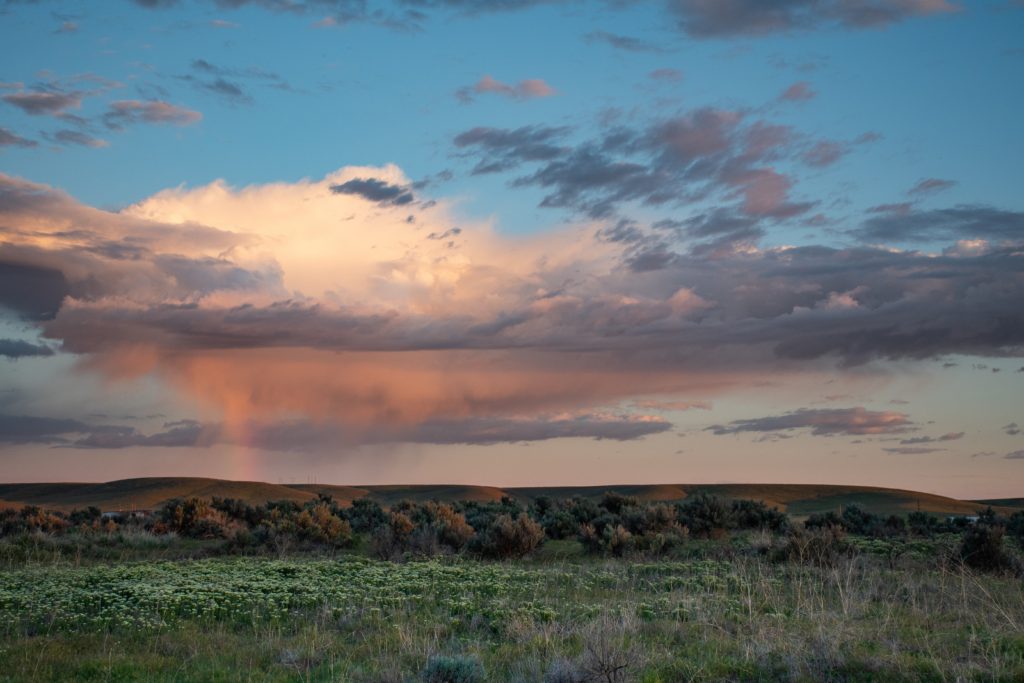When you think of endangered ecosystems, it’s often rainforests or coral reefs that come to mind as some of the most important and most at risk. And while these landscapes are of massive importance and are highly endangered, they aren’t the most endangered.
Our planet’s grassland ecosystems make up 40% of the planet’s surface, and of that only 10% is protected. They are intensely vulnerable to human disturbance, and more importantly, in Canada the majority of our native grassland ecosystems have been converted into arable farm land and other agricultural space.
Grassland habitats that can support the endangered species that need them to survive (like burrowing owls, black footed ferrets, and Northern leopard frogs) are increasingly few and far between. When it comes to protecting the biodiversity of grassland habitats, every little bit of protected space counts.
Just protecting grassland spaces is not enough. Without the plains bison who once roamed Canada’s prairies in herds of thousands, the flora and fauna of our grasslands cannot sustain itself. Protecting our prairies is not just a matter of roping them off and leaving them to be— it is a situation that requires management strategies that involve large grazing animals, among other mitigation techniques.
That’s why we’re so excited to share the news about the recent conservation of 80,000 hectares of native grassland here in Saskatchewan by Environment and Climate Change Canada.
Today (Sept 8th, 2020), the Honourable Jonathan Wilkinson (ECCC), the Honourable Marie-Claude Bibeau (Minister of Agriculture and Agri-Food) and Saskatchewan Minister of Agriculture David Marit announced a formal land exchange that allows the federal and provincial governments to work together with local ranching communities to preserve Saskatchewan’s native grassland ecosystems.
“The Government of Canada is pleased to work with the Province of Saskatchewan, ranchers, and Indigenous leaders on this important land transfer in southwestern Saskatchewan. Together, we are protecting iconic Canadian biodiversity, including 10 species at risk, for generations to come. Congratulations to everyone who worked so hard over the years to make this transfer a reality.”
– The Honourable Jonathan Wilkinson, Minister of Environment and Climate Change
Read more here.
This land exchange involves the transfer of Govenlock, Nashlyn, and Battle Creek pastures from Saskatchewan to Environment and Climate Change Canada for the conservation of species at risk while continuing the sustainable management of the area through cattle grazing. Saskatchewan, meanwhile, will receive federal lands and improvements equivalent to the value of 55 former federal community pastures that have transitioned to producers control. As part of the agreement, Canada has acquired land from Saskatchewan valued at 64 million dollars for conservation purposes, in exchange for transferring land valued at $64 mil to Saskatchewan for efficient operation of pastures as provincial leased lands.
This area is internationally recognized as an important habitat for migratory and grassland birds, and as traditional Treaty 4 Territory and the homeland of the Métis. In the consultation process, ECCC, Agriculture and Agri-Food Canada, and Saskatchewan Government engaged local ranchers, communities, and Indigenous groups regarding the transfer of lands and administration, and local First Nations and Métis groups are working to establish an Indigenous Advisory Committee to ensure beneficial partnerships between all involved parties.
This area supports habitats for 10 species at risk including Swift Fox, Sprague’s Pipit, Chestnut-collared Longspur, McCown’s Longspur, Greater Sage Grouse, Burrowing Owl, Ferruginous Hawk, Mountain Plover, Long-billed Curlew and Northern Leopard Frog.

